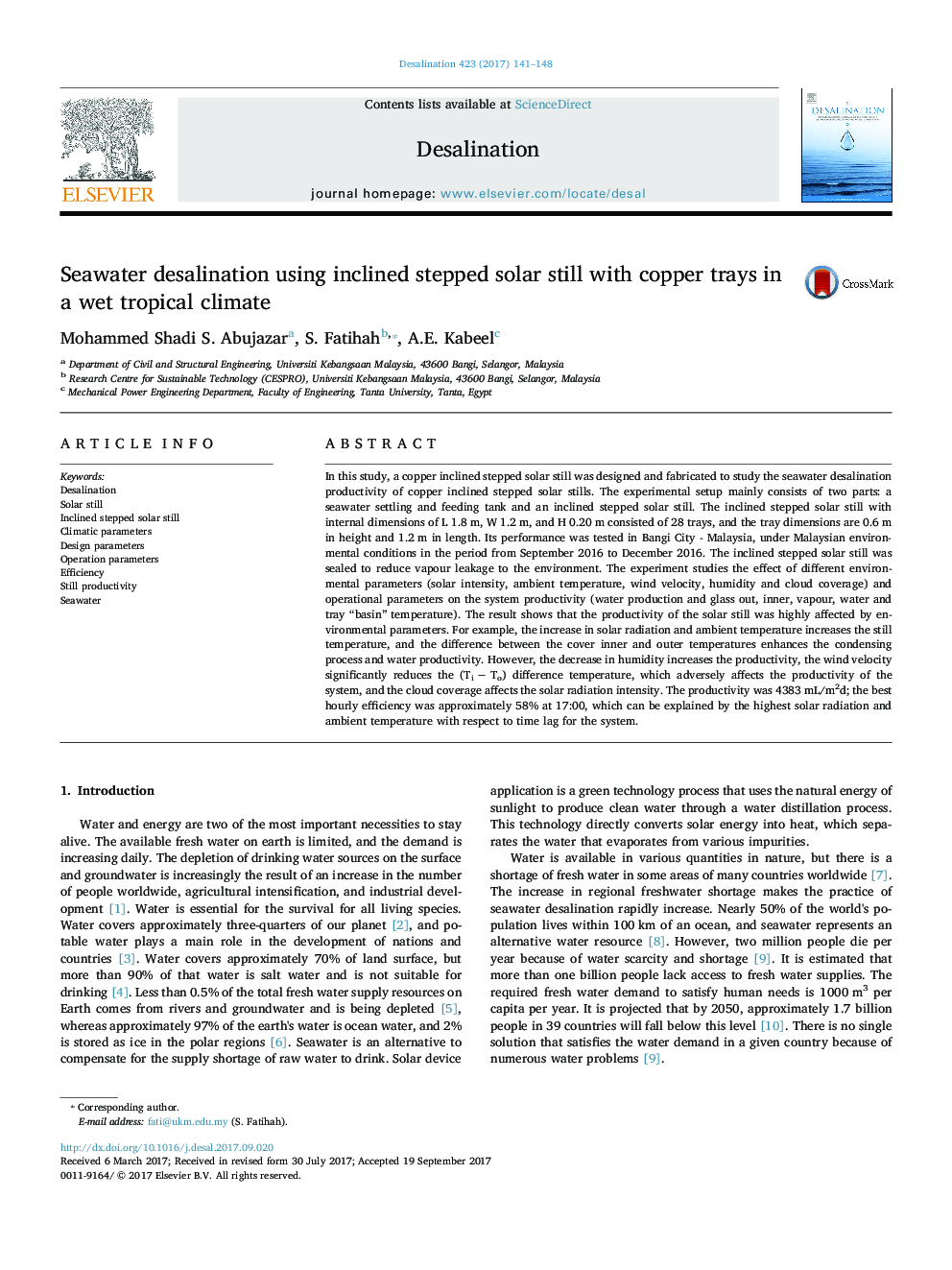| کد مقاله | کد نشریه | سال انتشار | مقاله انگلیسی | نسخه تمام متن |
|---|---|---|---|---|
| 4987534 | 1455272 | 2017 | 8 صفحه PDF | دانلود رایگان |
عنوان انگلیسی مقاله ISI
Seawater desalination using inclined stepped solar still with copper trays in a wet tropical climate
ترجمه فارسی عنوان
نمک زدایی دریای خام با استفاده از خورشید قدمی خفته با سینی های مس در آب و هوای مرطوب گرمسیری
دانلود مقاله + سفارش ترجمه
دانلود مقاله ISI انگلیسی
رایگان برای ایرانیان
کلمات کلیدی
نمک زدایی، خورشیدی هنوز، خمیدگی پایدار خورشید ادامه دارد، پارامترهای آب و هوا پارامترهای طراحی، پارامترهای عملیاتی، بهره وری، هنوز هم بهره وری، آب دریا
موضوعات مرتبط
مهندسی و علوم پایه
مهندسی شیمی
تصفیه و جداسازی
چکیده انگلیسی
In this study, a copper inclined stepped solar still was designed and fabricated to study the seawater desalination productivity of copper inclined stepped solar stills. The experimental setup mainly consists of two parts: a seawater settling and feeding tank and an inclined stepped solar still. The inclined stepped solar still with internal dimensions of L 1.8 m, W 1.2 m, and H 0.20 m consisted of 28 trays, and the tray dimensions are 0.6 m in height and 1.2 m in length. Its performance was tested in Bangi City - Malaysia, under Malaysian environmental conditions in the period from September 2016 to December 2016. The inclined stepped solar still was sealed to reduce vapour leakage to the environment. The experiment studies the effect of different environmental parameters (solar intensity, ambient temperature, wind velocity, humidity and cloud coverage) and operational parameters on the system productivity (water production and glass out, inner, vapour, water and tray “basin” temperature). The result shows that the productivity of the solar still was highly affected by environmental parameters. For example, the increase in solar radiation and ambient temperature increases the still temperature, and the difference between the cover inner and outer temperatures enhances the condensing process and water productivity. However, the decrease in humidity increases the productivity, the wind velocity significantly reduces the (Ti â To) difference temperature, which adversely affects the productivity of the system, and the cloud coverage affects the solar radiation intensity. The productivity was 4383 mL/m2d; the best hourly efficiency was approximately 58% at 17:00, which can be explained by the highest solar radiation and ambient temperature with respect to time lag for the system.
ناشر
Database: Elsevier - ScienceDirect (ساینس دایرکت)
Journal: Desalination - Volume 423, 1 December 2017, Pages 141-148
Journal: Desalination - Volume 423, 1 December 2017, Pages 141-148
نویسندگان
Mohammed Shadi S. Abujazar, S. Fatihah, A.E. Kabeel,
